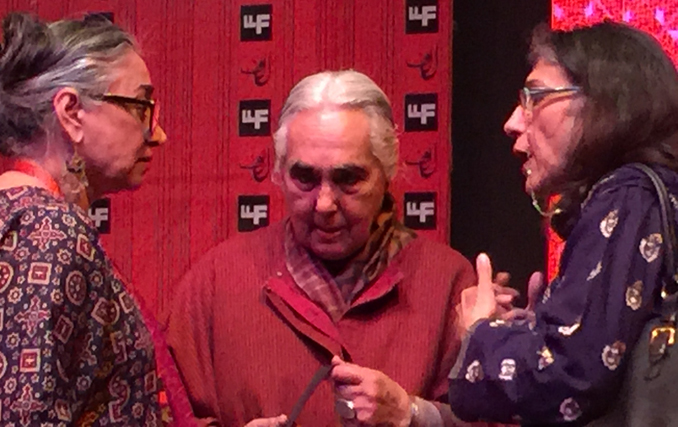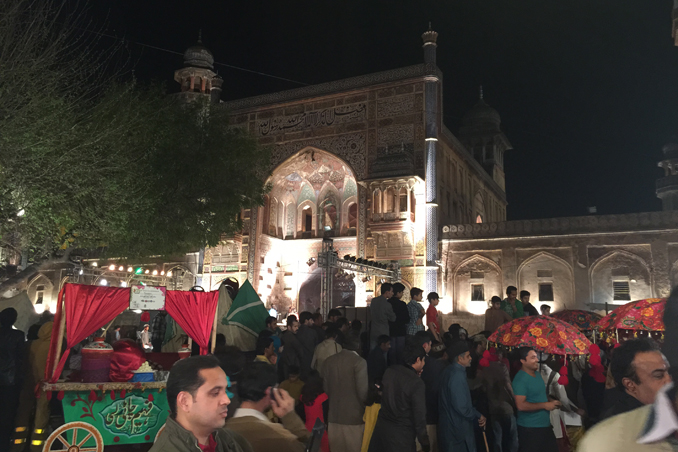Written by: Dr. Dushka H. Saiyid
Posted on: March 03, 2015 |  | 中文
| 中文
Martial Law Declared in Pakistan on 7th October, 1958
The Mughals called Lahore the city of gardens, and built monuments like the Badshahi and Wazir Khan mosques, and the Shalimar Gardens. When the British annexed Punjab to the British Indian Empire after defeating the Sikhs in 1849, they built a new city outside the warren of narrow streets and gates that constituted the old Walled City of Lahore. Lutyens had done the same, building New Delhi, separate and distinct from Old Delhi that reflected the imperial grandeur of the British Indian Empire. The Mall was the central artery that ran through colonial Lahore, resplendent with gems of Indo-Saracen architecture, a pleasing mixture of Indian and Gothic.
It was the establishment of many educational institutions, such as the Punjab University, Government College and the National College of Arts, that introduced modern education to the intelligentsia of Punjab, while the construction of a canal system brought prosperity to the province. Punjab’s isolation from British India came to an end with the extension of the network of railways into Punjab. All these changes helped Lahore flower as a cultural centre.
At the turn of the century, it spawned such publications as the Paisa Akhbar, Maulana Zafar Ali’s Zamindar, and Sayed Mumtaz Ali’s weekly for women, Tehzib-e-Niswan, and The Civil and Military Gazette. Iqbal had moved to Lahore, and by the second decade had emerged as a poet philosopher, who wrote both in Persian and Urdu, with wide appeal in the Muslim Ummah. His exhortations for the renaissance of the Muslims in general, and of the Indian Muslims in particular, culminated in his Allahabad address of 1930, where he demanded a separate homeland for the Muslims of India. Lahore was soon caught up in the vortex of Muslim nationalism, and Punjab’s support for the creation of Pakistan proved critical.
The Pak Tea House became a symbol of a culturally vibrant Lahore, both before and after Partition. Progressive writers and intellectuals, including such luminaries as Manto, Munir Niazi and Faiz, would meet there. The Pakistan Times, a daily, became the voice of the progressive left; owned by Mian Iftikharuddin, with successive editors of the hue of Faiz Ahmed Faiz, and later Mazhar Ali Khan.
All this changed as the winds of the Cold War began to bring a chill to Pakistan. In the Rawalpindi Conspiracy Case of 1951, a galaxy of intellectuals were picked up and incarcerated. Ayub Khan’s coup of 1958 led to further snuffing out of freedom of expression, as The Pakistan Times was nationalized. Symptomatic of the new era, Hassan Nasir, a Cambridge educated left-wing leader who was organizing workers in Karachi, was picked up and tortured to death in the Lahore Fort, although Syed Sibte Hassan continued to soldier on with the progressive weekly, Lail-o-Nahar. A witch-hunt by the Lahore based Nawai Waqt, drove Qurat-ul-Ain Hyder, the greatest prose writer of the 20th century, out of Pakistan. Lahore had lost its cultural vibrancy, although music continued to flower with the annual classic music festival in the open-air theatre of the Lawrence Gardens, where such renowned singers as Roshan Ara Begum performed, while the ‘65 war brought out arguably the best in Noor Jahan. If the movement of 1968 brought Ayub down, the Bhutto era turned out to be the harbinger of a false spring, while Zia’s eleven long years of rule have become synonymous with darkness.
The thaw began when Musharraf opened up the electronic media to private television channels in year 2002. When I went to attend the Lahore Literary Festival (LLF) last month, the city had a different feel to it. Thousands of Lahoris were thronging to the festival. The different auditoriums of the Alhambra Arts Centre were holding simultaneous sessions, and were packed out to hear such eminent literati and celebrities as Naseeruddin Shah, Kamila Shamsie and Andrew Small. I bumped into friends and acquaintances from Islamabad and Karachi, who had converged on Lahore to attend this literary celebration. Romila Thapar’s keynote address, a tour de force into how the interpretation of history is often used for the “requirements of the present”, brought intellectual gravitas to the event.
 |
(l-r) Nusrat Jamil, Romila Thapar and Ayesha Jalal |
While Lahore was abuzz with the LLF 2015, Kamran Lashari, the moving spirit behind the Walled City of Lahore’s conservation project, had organized a Jashn Shahi Guzargah or festival, to coincide with it. Glitzy rickshaws, all in gold, stood outside the Delhi Gate that also offered the facility of valet parking. The Delhi Gate itself looked a bit too pristine, while the Gali Surjan Singh and the old shops wore a fresh look. Folk dancers performed as they moved down the gali (narrow street) in a colourful procession towards the Wazir Khan chowk (square) that was lined by food stalls selling popular culinary favourites of the City. Open-air free performances in the Chowk Wazir Khan were planned for the three consecutive evenings of the Festival, and included such big names as Sanam Marvi and Arif Lohar. Rafi Peer and Ajoka Theater were giving free performances in the Sabeel Wali Gali, where the place ran out of seating. People, who were at the LLF in the morning, were soaking in the revival of the Walled City at night.
 |
Wazir Khan Mosque |
As we wandered the festive streets of the Walled City, I bumped into a friend from Islamabad, who declared, “I’m thinking of moving to Lahore. There is so much happening here!” With a gap of a week after the LLF, the International Film Festival is on the cultural calendar of Lahore, organized by the Rafi Peer Theater Workshop. After a sterile hiatus of a few decades, Lahore has made a comeback as a cultural centre. Known for their zinda dilli (joie de vivre), this is the Lahori way of nose-thumbing the nihilistic militants.
You may also like: